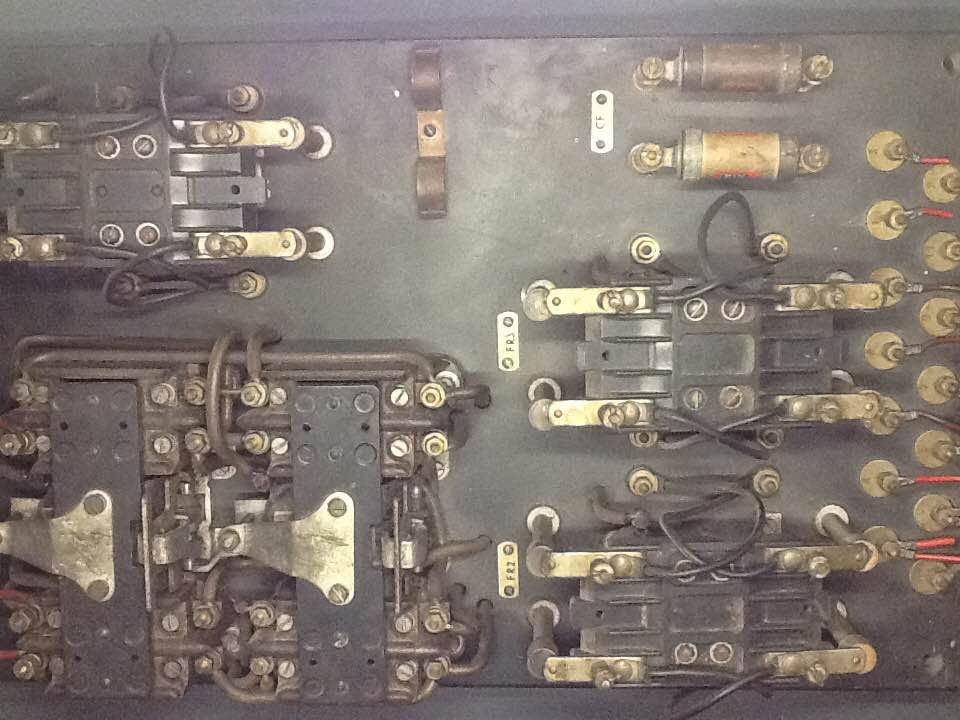This is a vintage slate lift (elevator) controller that I salvaged out of a skip (dumpster) when it was being ripped out of a building I was working on. It’s from the early days of electrical controls, so the design is super-simple and very well engineered. It’s notable that the electronically controlled replacement elevators (more than one) were a lot less reliable than this old workhorse.
It served three floors and has just three contactors with two NO (Normally Open) and two NC (Normally Closed) contacts on each. It also has the motor control contactor assembly with two sets of four normally open contacts and an interlock system to prevent both from closing at once (which would short out the incoming three phase supply).
The lift position control was done by three-position switches in the shaft at each level. The switches were physically moved from one side to the other and left in that state as the elevator car passed them. When the elevator car was level with the landing its switch would be in the mid position. The two outer connections of all the switches in the shaft were commoned and linked to the up and down contactor coils so when a call was placed and the appropriate level switch was energised it would feed the contactor to make the motor run in the correct direction. When the lift was at its destination level and its switch roller was moved to the mid position it would also break the control circuit for that level causing the contactors to drop out, stopping the lift and also preventing a call from being placed from that level. When the car door or any landing door was opened it broke the control circuit, as did end of shaft emergency limit switches and any other safety switches to prevent motor movement.
The three phase incoming power (415V) goes straight to the contactors and a tap is then taken from two of the phases via fuses to feed the control circuitry. This means all the call buttons and switches had 415V across them. There is no neutral connection used. And the car light would have had its own separate supply.
There’s no speed control. The motor starts at full torque and stops suddenly when it reaches its destination. This makes for an exciting ride and limits the maximum speed, but the pay-off for that is ultra simple circuitry and the resultant reliability.
The contactors all have replaceable contacts and coils, and the car and landing call switches all had carbon block contacts, again for reliability.
It’s probably worth mentioning that when I was a kid, the first job I wanted was as a lift engineer (elevator mechanic). But that was vetoed by my dad who said I would have to become an electrician first. In reality if I had ended up working with a lift engineering company I would have been in the same class at college one day a week anyway, as the City and Guilds 236 electrical installation course covered a wide range of electrical trades.
If you enjoy my videos you can support the channel by throwing a dollar to the elevator attendant for coffee and cookies at
The weight of the slate control panel is:- 15.9kg (35 pounds) (2.5 stone)

